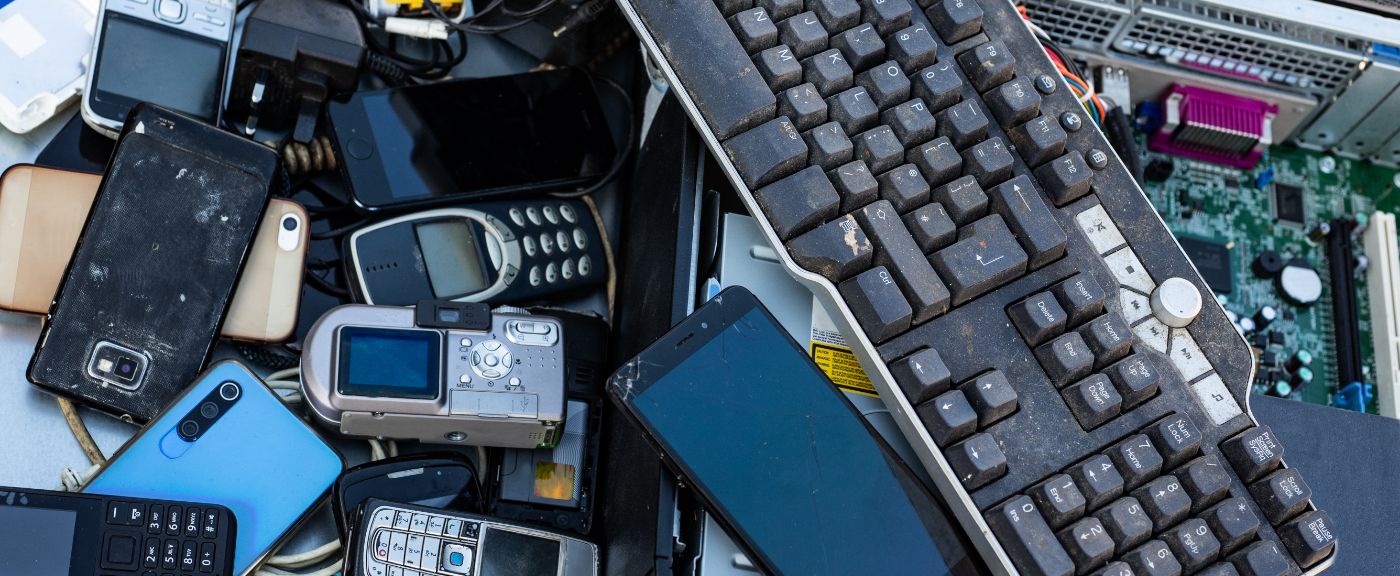Sustainable Electronics Disposal: Guarantee Compliance with R2 Certification
Elevate Your E-Waste Management With R2 Certification: a Thorough Introduction
One trick method to raise e-waste monitoring practices is by obtaining R2 qualification. By exploring the benefits and procedures connected with R2 qualification, a deeper understanding of how it can reinvent e-waste administration strategies emerges, shedding light on a path in the direction of sustainability and moral disposal techniques.
Significance of E-Waste Administration

When e-waste is not managed properly, these hazardous materials can permeate into the ecosystem, triggering injury to wildlife and possibly getting in the food chain, presenting threats to human health. In addition, the improper disposal of e-waste adds to air pollution and greenhouse gas exhausts, intensifying environment adjustment and environmental deterioration.

Benefits of R2 Qualification

Firstly, R2 accreditation boosts trustworthiness by showcasing a company's dedication to lasting techniques. It guarantees consumers, partners, and stakeholders that the business abides by strict requirements for e-waste monitoring - r2 certification. This reliability can cause increased count on and boosted relationships with clients who focus on ecological duty
Second of all, R2 certification assists alleviate threats related to improper e-waste disposal. By adhering to the strict guidelines set forth by the qualification, companies can minimize the possibility of data breaches, ecological contamination, and lawful repercussions. This proactive method safeguards the business's online reputation and minimizes potential responsibilities.
Lastly, R2 accreditation demonstrates a dedication to ecological stewardship - r2 certification. By sensibly managing electronic waste with licensed processes, organizations contribute to the preservation of sources, reduction of air pollution, and promo of a round economic situation. This commitment not only benefits the atmosphere however also lines up with evolving customer expectations for lasting organization techniques
R2 Certification Process Summary
Having established the benefits of R2 certification in advertising reliability, risk reduction, and ecological stewardship, it is vital to currently detail the in-depth procedure associated with acquiring this certification. The R2 qualification procedure begins with a thorough testimonial of the organization's functional plans and procedures to make certain compliance with the R2 standard. This first evaluation is investigate this site crucial in recognizing any type of gaps that require to be dealt with prior to proceeding further.
As soon as the organization's practices straighten with the R2 conventional requirements, an independent third-party auditor performs an on-site audit to evaluate the execution and efficiency of these practices. This audit consists of a comprehensive testimonial of paperwork, meetings with team, and physical evaluations of centers to validate compliance.
Complying with a successful audit, the company gets a certification choice based upon the auditor's findings. If authorized, the organization is provided R2 certification, showing its dedication to liable e-waste administration. It is essential to keep in mind that keeping R2 accreditation calls for ongoing conformity with the requirement's needs and regular audits to make sure get redirected here continued adherence to ideal methods in e-waste recycling and disposal.
Key Standards for R2 Compliance
An important element of attaining R2 conformity is making sure that all digital waste (e-waste) processing facilities meet rigid ecological and safety and security standards. To abide with R2 needs, organizations should abide by vital standards that focus on responsible e-waste management methods. These requirements consist of applying a documented environmental, health and wellness, and safety and security management system, making sure the secure handling of data-containing tools, and conducting thorough downstream due diligence to track the final destination of e-waste materials.
Moreover, R2 compliance necessitates the correct screening, repair, and recycling of digital devices to prolong its helpful life and reduce environmental impact. Facilities looking for R2 qualification need to likewise prioritize worker health and wellness by giving needed training, personal protective equipment, and a secure functioning atmosphere. Additionally, keeping in-depth records of e-waste handling activities and on a regular basis undertaking audits by certified licensing bodies are important parts of showing ongoing conformity with R2 requirements.
Impacts of Lasting E-Waste Practices
The application of sustainable e-waste techniques according to R2 conformity not just guarantees ecological and security standards are satisfied but additionally substantially impacts the general lifecycle of electronic items. By adhering to R2 requirements, electronic waste monitoring processes come to be extra effective, decreasing the ecological footprint of digital products. Lasting e-waste practices assist in the proper disposal of digital components, ensuring that dangerous article source products are dealt with sensibly and do not end up contaminating the environment.
In addition, sustainable e-waste techniques can contribute to task production in the recycling and refurbishment industries, cultivating financial development while promoting environmental obligation. In general, the fostering of lasting e-waste methods under R2 certification serves as a critical step towards attaining a more environmentally sustainable electronic devices sector.
Conclusion
Finally, executing proper e-waste management methods is vital for ecological sustainability and resource conservation. R2 certification plays a crucial function in making certain liable handling and disposal of digital waste. By adhering to the rigid standards established forth by R2 criteria, companies can not only minimize their environmental effect however likewise add to an extra sustainable future for generations to find.
One secret technique to boost e-waste management techniques is by acquiring R2 qualification. By checking out the procedures and advantages linked with R2 certification, a deeper understanding of how it can reinvent e-waste administration techniques emerges, losing light on a course towards sustainability and moral disposal methods.
The R2 certification procedure starts with a comprehensive testimonial of the organization's functional policies and procedures to ensure compliance with the R2 criterion. If approved, the company is granted R2 accreditation, showing its commitment to liable e-waste management. Generally, the fostering of sustainable e-waste methods under R2 qualification serves as a crucial step in the direction of achieving a much more eco sustainable electronics market.